An early entrant into the crossover segment, the Subaru Forester has been defying SUV norms for 25 years with tall station-wagon styling, standard AWD, and horizontally-opposed four-cylinder power. It’s been a winning combination with the Forester earning a loyal customer base as it has evolved into the current fifth-generation model.
As a vehicle with over two decades of popularity, the Subaru Forester is by and large a well-built vehicle. However, as with any car, there are challenges along the way. Which is why we’ve put together this ranking of the best and worst model years based on objective factors like FIXD Reliability scores and subjective owner input – as detailed below.
| Best Years | Why? | Worst Years | Why? |
| 2020-2021 |
High points in reliability, fuel efficiency, and safety |
2005-2006 |
Difficult rollout of variable valve timing |
| 2015-2017 |
Consistent FIXD score improvement, great value |
2003 |
First year of 2nd-gen production |
| 2012-2013 |
Big step up in reliability year-over-year |
2001 |
Low reliability scores, poor fuel economy |
| 2009-2011 |
Successful 3rd-gen model launch |
2007-2008 |
Long shop visits, transmission troubles |
| 2004 |
Turbocharged powertrain arrives without issue |
2014 |
Problems with first year of 4th-gen model |
| 2002 |
Impressive safety figures, reliability moves up |
2018-2019 |
All-new 5th-gen reliability struggles |
If you’d like to see an in depth comparison of this vehicles competitors, check out:
Toyota RAV4 Vs Subaru Forester
Subaru Forester Vs Subaru Outback
Subaru Forester Vs Toyota Highlander
Subaru Forester Engine Reliability Score, Safety Ratings, MPG, and Value v.s. Maintenance & Repair Costs Year by Year
The first chart below, Subaru Forester Reliability Score, is the main driver of our model year rankings. It is a combination of objective FIXD device data and subjective owner-reported information. Typically the first year of a new generation – like 2003 and 2014 – will struggle with reliability as the kinks are worked out, which is reflected in the chart.
From there, we blend in published government safety scores from the National Highway Traffic Safety Administration (NHTSA) and fuel efficiency figures per fueleconomy.gov.
We also incorporate market values from Kelley Blue Book (KBB) against owner-reported annual maintenance costs. That goes into the ranking decision along with owner survey answers and pertinent safety recalls. Lastly, with details on safety recalls, and common Diagnostic Trouble Codes (DTCs) we can create the final rankings below.
Engine Reliability Score – Over The Years

The green line on this Subaru Forester Reliability Score chart is based on the number of CELs thrown by each model year. After tallying them up, we weight this objective score by mileage and convert it into a 1-10 scale where 10 is the best and 1 is the worst.
By asking Forester owners, “How reliable would you say your car is?”, we can pull together a subjective reliability score for comparison. This multiple-choice question offers answers from “Just Point A to Point B driving” to “I could take a cross-country trip, no problem.” After converting the answer into a 1-10 scale, we create the gray line above.
As you can see, the objective and subjective reliability scores mostly move in the same direction. But occasionally, like in 2005, the scores diverge dramatically. We’ll explain this in the relevant sections below but it helps illustrate the importance of analyzing both sets of data.
You can learn more about our reliability scoring process at the bottom of this article and find out some of the most common CELs to expect from Subaru.
NHTSA Safety Score – Over The Years
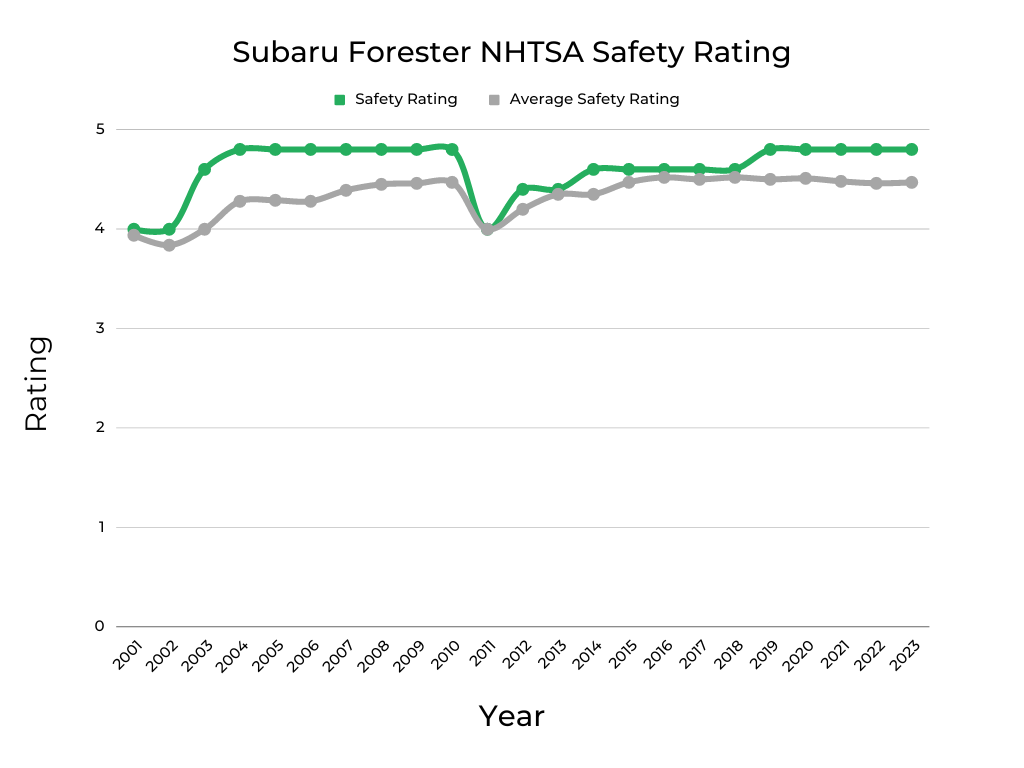
Subaru has earned a reputation for building safe vehicles and that is borne out on the Forester safety chart above. The dramatic dip in 2011 is a result of the NHTSA modifying its testing protocol that year to be more strenuous, which impacted Forester scores and the industry as a whole.
The gray line indicates the average crash test safety rating across the industry per published NHTSA data. The green line is based on data from the same source but only for the Forester. As you can see, the Forester generally rates higher than the industry average for safety with a few years where the scores converge.
It’s also important to understand how a given model year of the Forester ranks for safety as it plays a big role in keeping insurance premiums down. If you live in one of the states listed below, we can show you the cheapest vehicles to insure in yours.
| What Used Cars Are the Cheapest To Insure In: |
| Ohio |
| North Carolina |
| Michigan |
| Georgia |
| Texas |
| New York |
| Illinois |
| Pennsylvania |
| California |
MPG – Over The Years
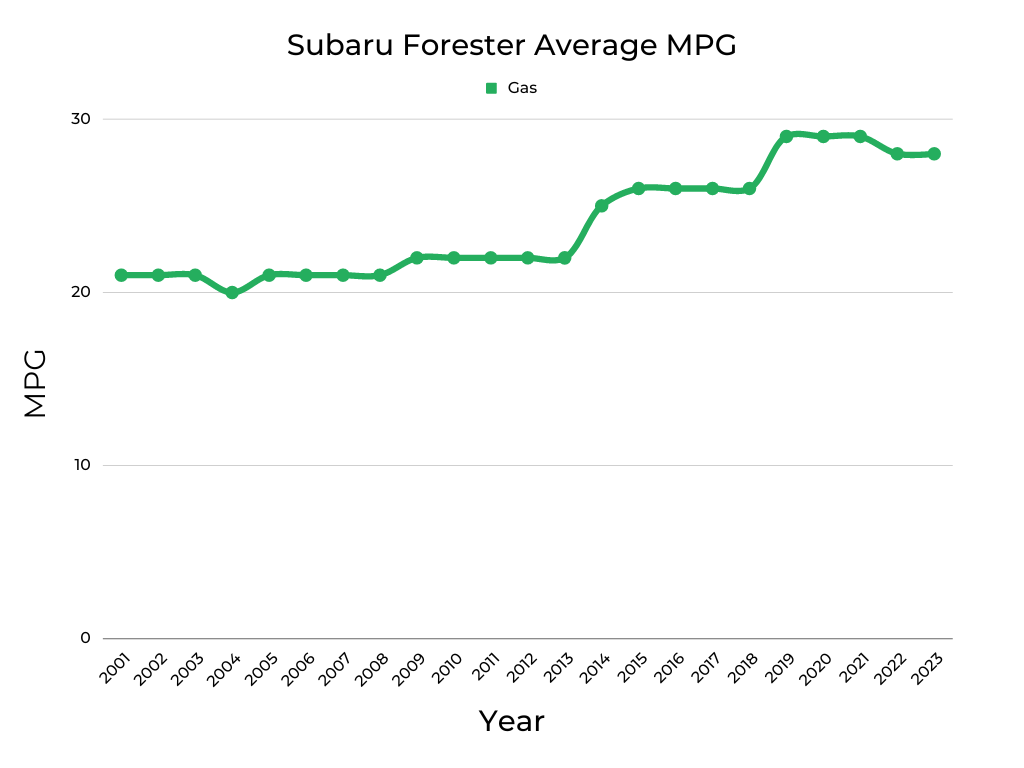
By averaging the combined fuel economy figures – from fueleconomy.gov – across all trims of each model year, we can create the above Subaru Forester Average MPG chart. As with most vehicles, the Forester’s fuel economy continually improves year-over-year as the long-running “Boxer Four” lineup becomes more efficient, transmissions are upgraded, and technology improves.
Highlights include 2019 when the average stepped up three mpg thanks to the more fuel-efficient, albeit problem-prone, fifth-generation Forester that launched that year.
Current Market Value of All Subaru Forester Years & Cost Per Year to Repair and Maintain Each
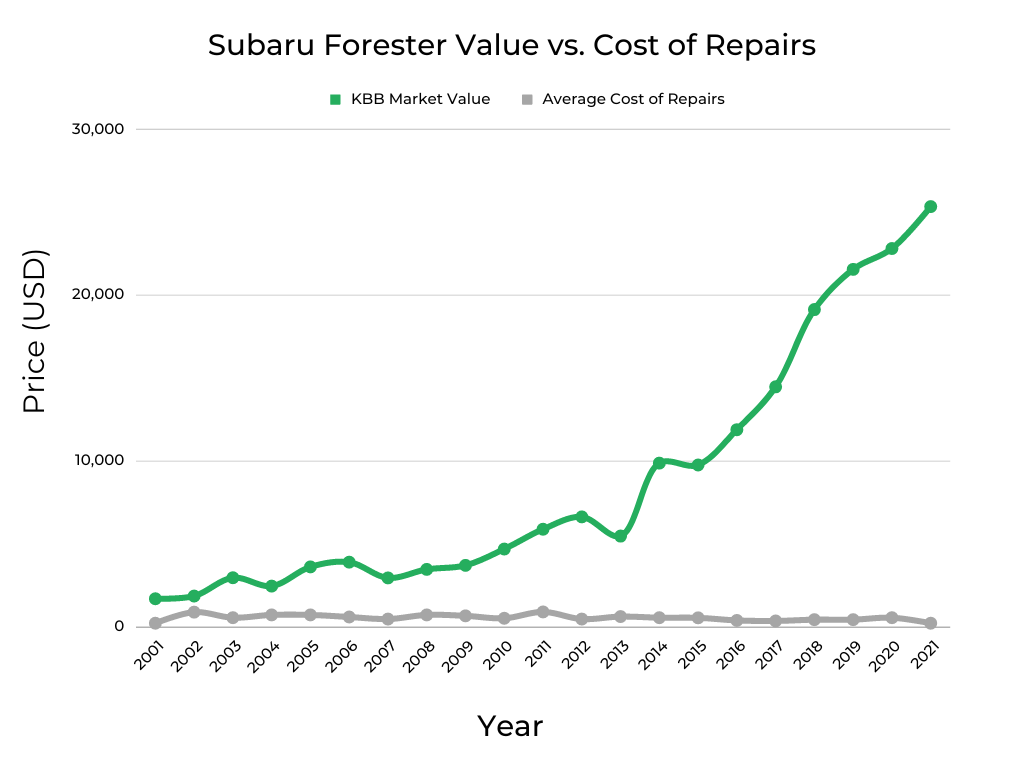
This chart plots current Subaru Forester market values from KBB against annual maintenance costs per owner surveys. It’s a valuable set of data points in defining why some model years are best avoided. For example, in 2007, the value metric (green) went against the trend. It’s one reason the 2007 Forester lands on our list of worst model years.
If you’d like to learn about this vehicle’s past depreciation rate & our projected depreciation rate based on that, check out: Subaru Forester | Depreciation Rate & Curve Graphed.
When shopping for a used Subaru Forester, it’s important to keep in mind that not all vehicles are cared for equally. To protect yourself from lemons, take along a FIXD Sensor on your test drive. FIXD connects to a free app on your smartphone to tell you more about the vehicle you’re checking out, including check engine lights and other hidden issues that the owner or dealership may be attempting to hide. Click here to learn more and get FIXD for only $19.99 (regular price $59)!
Important Features Timeline

1998: First-gen Forester debuts with “SUV Tough, Car Easy” tagline
1999: 2.5L boxer-four and 4-speed automatic mildly revised
2000: S models receive rear disc brakes
2001: Facelifted exterior, 3-point seat belts added to the rear
2002: Daytime-running lights made standard
2003: Second-gen Forester arrives with revised chassis
2004: Turbocharged model arrives with variable valve timing (VVT)
2005: L.L. Bean edition added to lineup, new automatic transmission
2006: VVT added to base motor as part of a comprehensive refresh
2007: Naturally aspirated engine becomes PZEV-certified in all 50 states
2008: Stability control fitted to turbo models with automatic transmission
2009: Larger third-gen Forester shows up with available panoramic roof
2010: Bluetooth connectivity added to navigation system
2011: Mid-cycle refresh with facelift, new engine, and more tech
2012: Height-adjustable front passenger seat now standard
2013: New central touchscreen offered
2014: Fourth-gen model debuts with new advanced safety nets
2015: Backup camera becomes standard equipment
2016: All Foresters receive a 6- or 7-inch infotainment display
2017: Comprehensive refresh of styling, powertrain, and chassis
2018: Black Edition model added to lineup
2019: All-new fifth-gen Forester arrives on Subaru Global Platform
2020: Lane Centering feature added to EyeSight suite of driver aids
2021: Adaptive headlights become standard
2022: Wilderness model debuts as part of mid-cycle refresh
The Best Years of the Subaru Forester
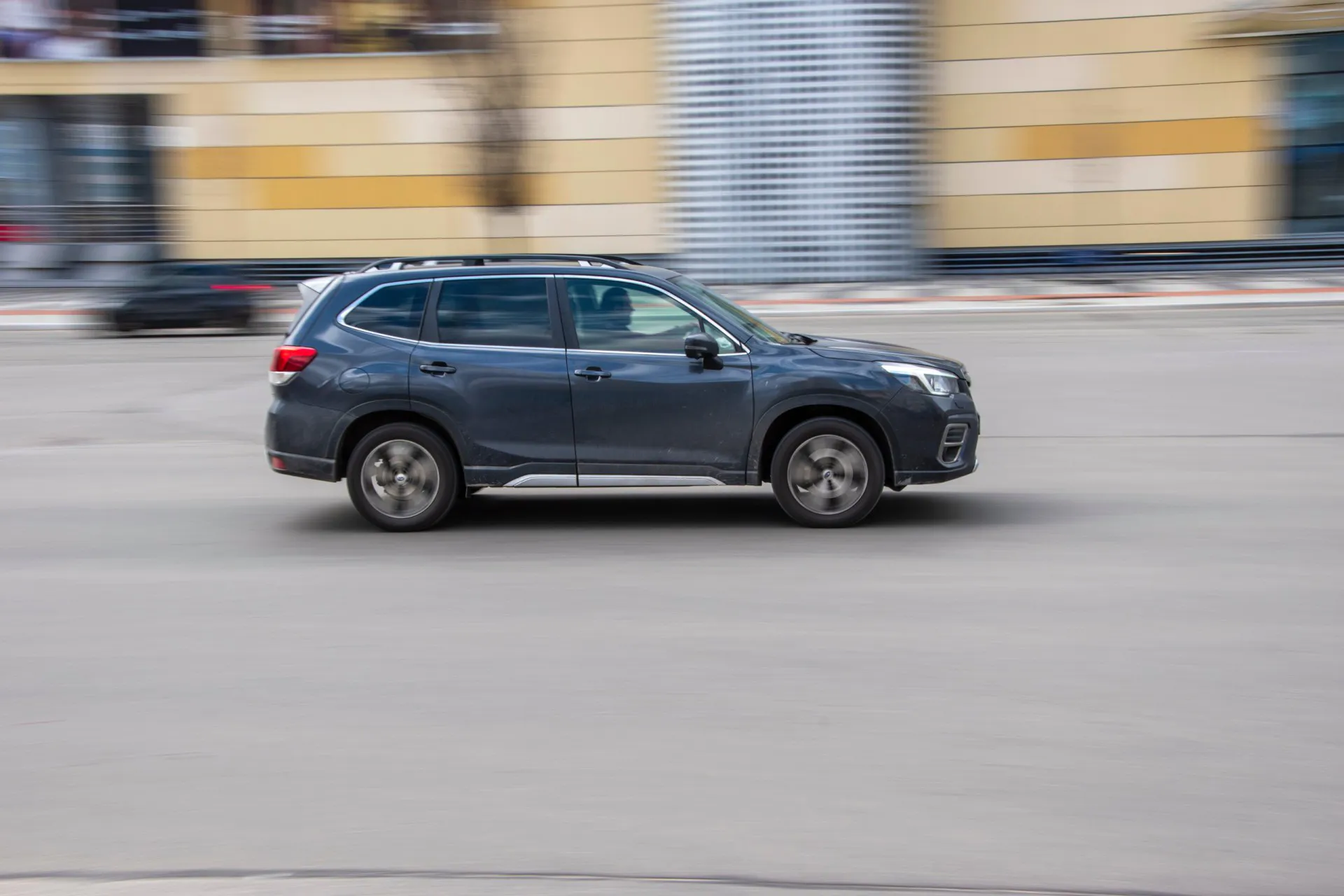
Taking into account FIXD and owner-reported reliability, government safety scores, fuel efficiency, and Forester owner survey responses, we’ve come up with this list of the best Subaru Foresters. Pertinent recall information and notes about common DTCs are included as well.
2020-2021 Subaru Forester
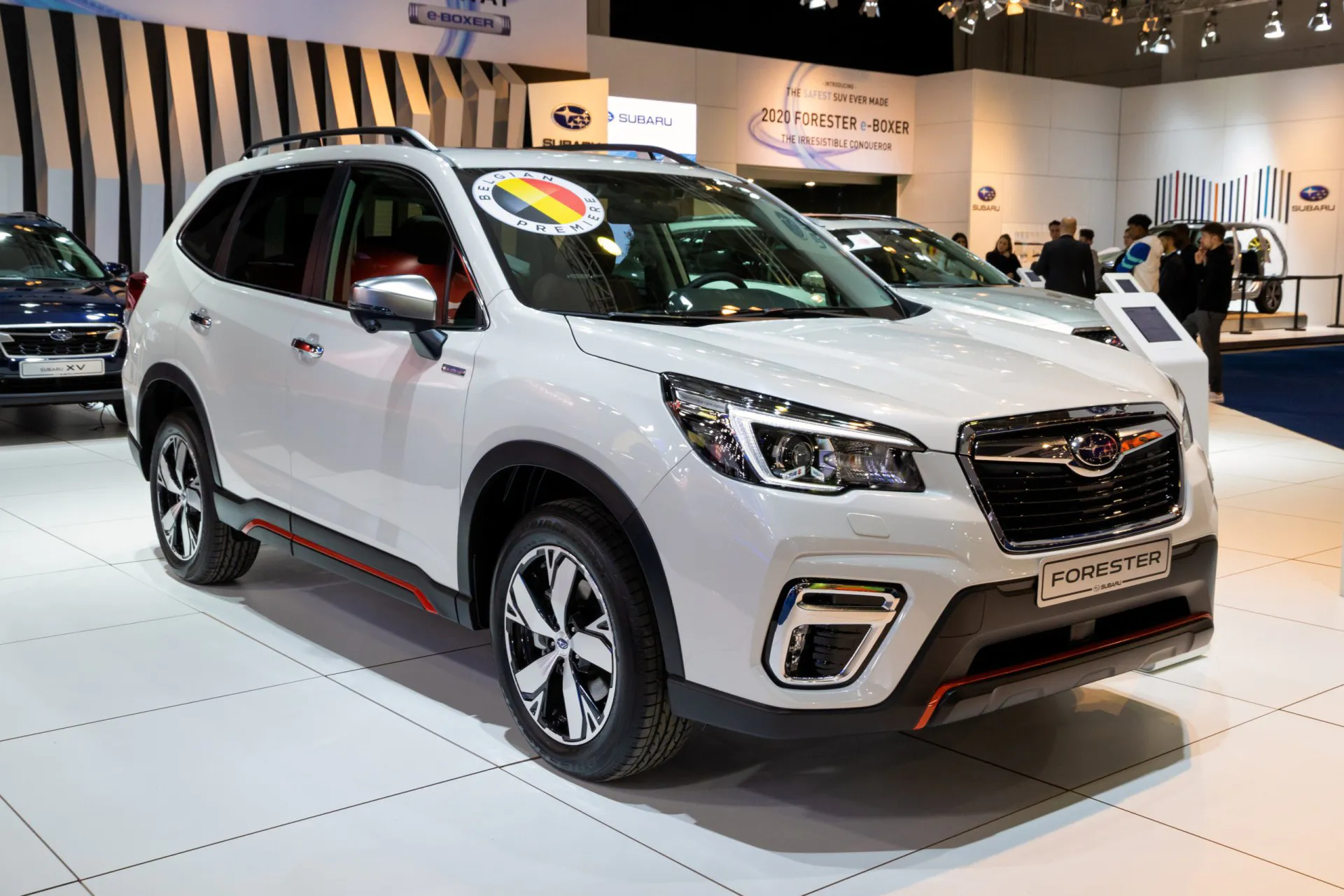
FIXD App Engine Reliability: 10/10
Owner-Reported Reliability: 10/10
KBB Value: $22,813-$25,337
Fuel Economy: 29 mpg
Annual Maintenance/Repair: $250-$583
Safety Rating: 4.8/5
One year after the all-new fifth-generation Forester debuted in 2019, the FIXD Reliability score popped up to 10/10 and stayed there until 2021. Owner-reported reliability was also atop the chart during this span, marking the only period when both reliability scores matched up.
As well, fuel efficiency is at an all-time high of 29 mpg, the NHTSA safety is well above average, KBB values are moving up, and annual maintenance costs are moving down. It’s not easy to find model years where all these factors are so well aligned, which makes the 2020-2021 Subaru Forester a shoo-in for the top ranking here.
A relatively high percentage of owners, 21% in 2021, are happy with seat comfort, while 18% of 2020 owners like the entertainment system and feel there is plenty of storage. All three of those areas were heavily reworked by Subaru for the fifth-gen model that arrived in 2019, so kudos to the automaker for strong execution.
So far, the NHTSA has issued zero recalls, an impressive and uncommon feat. It is less surprising when you factor in an average of less than a day in the shop each year per owner surveys and an annual maintenance bill of just $250 for 2021 models, which is well below the $659 average.
Of course, no vehicle is perfect and when issues do arise, two of the most common are related to DTC P2A63 and P2A65, both of which indicate an issue with the thermo-control valve assembly. DTC P0455 is another one to watch out for. Fortunately, it likely means the gas cap is loose or needs replacement, which should cost $165 or less.
2015-2017 Subaru Forester
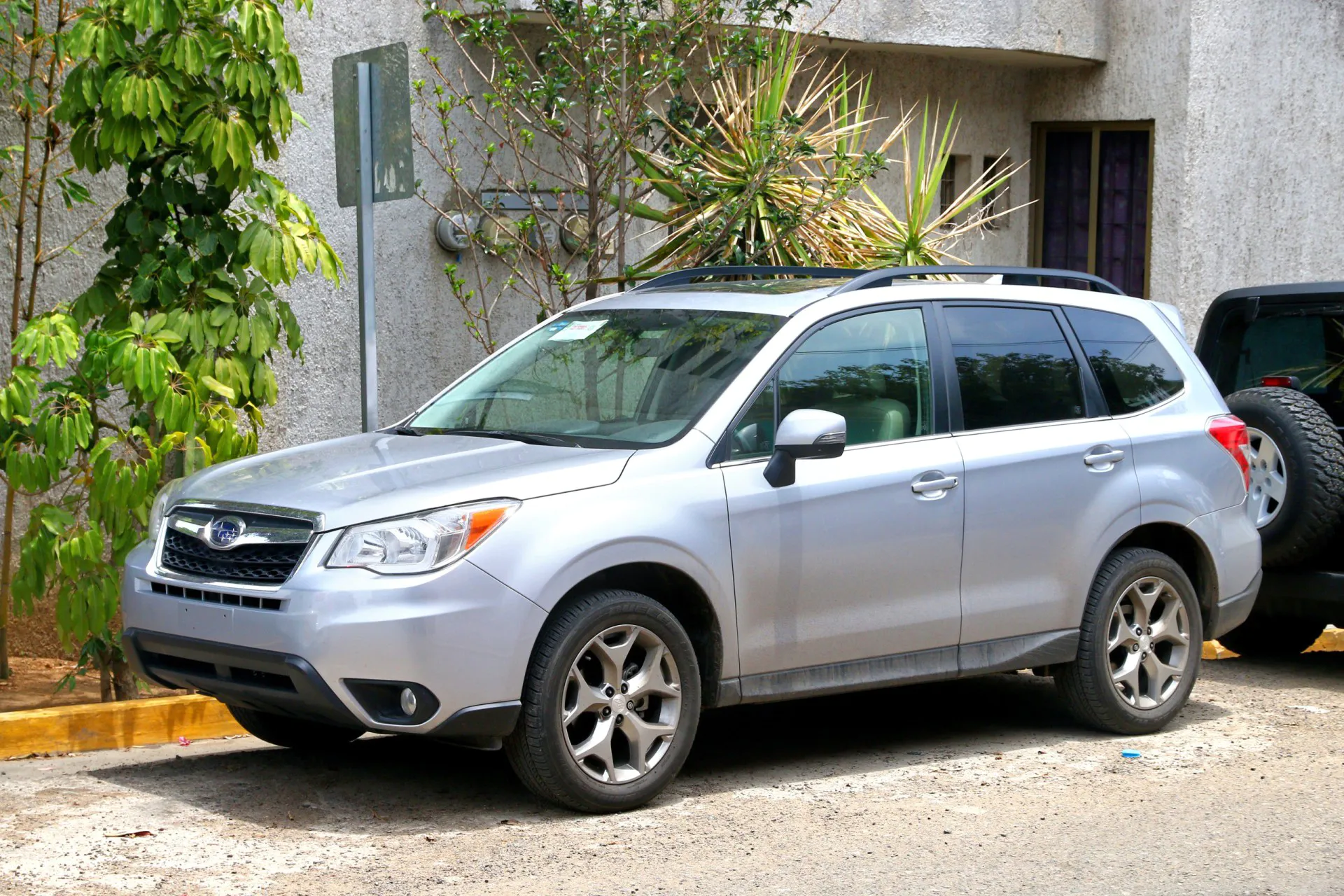
FIXD App Engine Reliability: 8-9/10
Owner-Reported Reliability: 9-10//10
KBB Value: $9,778-$14,485
Fuel Economy: 26 mpg
Annual Maintenance/Repair: $386-$575
Safety Rating: 4.6/5
In 2017, towards the end of fourth-gen production, Subaru implemented a comprehensive refresh on the Forester lineup. Along with updated styling and more advanced safety systems, the AWD system and turbocharged 2.0L engine were revised and NVH was improved with thicker window glass, stronger seals, and more insulation.
This helped drive the FIXD Reliability score to a 10/10 that year on the heels of annual increases going back to 2015. Owner scores stayed elevated over this period, average fuel economy was relatively high at 26 mpg, and KBB figures moved steadily up. With an average of 88,000 to 108,000 miles on the clock, these Foresters are a solid value.
When the fourth-gen Forester arrived in 2014, it was lauded for a major cabin overhaul that raised seating positions and increased overall space. That is reflected by the 30% of 2016 owners who think there is ample driver visibility versus an average of 21% for this metric.
There were three recalls in 2015, including one for an issue with brake lights not illuminating properly that impacted about 1.3 million Subarus. The 2016 Forester also saw three recalls including one for an airbag problem that affected 366,282 vehicles. The only recall in 2017 was for the same airbag issue.
One of the most DTCs over these three years is P0420, which could mean an expensive – $1,500 to $2,000 – catalytic converter replacement. DTC P0137, another common code, typically indicates an oxygen sensor malfunction. If you see DTC P0700, it means there is likely a severe problem with the transmission control module (TCM) that should be addressed immediately.
2012-2013 Subaru Forester
FIXD App Engine Reliability: 6-8/10
Owner-Reported Reliability: 6-8/10
KBB Value: $5,496-$6,653
Fuel Economy: 22 mpg
Annual Maintenance/Repair: $500-$650
Safety Rating: 4.4/5
During the final two years of gen-three Forester production, the FIXD Reliability score moved from 5/10 in 2011 to 6/10 in 2012 and then up to 8/10 for 2013. This indicates Subaru worked to keep improving the third-gen lineup after it was introduced in 2009.
The owner-reported reliability metric over this span steps up and then drops down, against the FIXD trend. Looking at the survey data shows that in 2013, owner responses all leaned towards a negative sentiment on reliability as no one felt their Forester could drive cross-country without issue.
However, the roughly 700 DTCs recorded by FIXD devices that year is nearly 40% below the average annual count, which illustrates the objective nature of this metric and why we lean on this data when the two reliability scores don’t move in the same direction.
There were quite a few recalls during this period with 15 in 2012 and 12 in 2013, with the majority related to airbag problems. Subaru should repair any recalls free of charge on vehicles up to 15 years old. You can use this NHTSA VIN tool to find out if your car has an open recall.
Annual repair bills for the 2012 and 2013 Forester are near or below the overall average, but if DTC P0700 shows up, it could be an expensive visit to the shop. This CEL means the TCM is acting up with repairs running between $2,500 and $3,000. That aligns with a 16% chance that the transmission is behind an expensive repair for both years.
Another issue to be aware of is DTC P0420, which means you may be due a pricey replacement catalytic converter. Fortunately, DTC P0455, also common in 2012 and 2013 Foresters, likely means the gas cap is loose and simply needs to be tightened.
2009-2011 Subaru Forester
FIXD App Engine Reliability: 5/10
Owner-Reported Reliability: 7-8/10
KBB Value: $3,773-$5,909
Fuel Economy: 22 mpg
Annual Maintenance/Repair: $547-$929
Safety Rating: 4-4.8/5
The 2009 Forester bucks the automotive trend of a new vehicle generation struggling with reliability. Marking the first year of gen-three production, the 2009 Forester’s FIXD Reliability score moved up from 4/10 the prior year to 5/10 and stayed there until 2011. As well, the owner-reported figure jumped two points to 8/10 in 2009.
Kelley Blue Book’s market value moved steadily up over this span and though the safety score dropped in 2011, it remains relatively high at 4/5. It’s also important to note that in 2011, the NHTSA introduced a new testing protocol that was more stringent, which caused an industry-wide correction as seen on the safety score chart.
Maintenance costs do run high in 2011, but keep in mind these Foresters are well past 10 years old and average 130,000 miles on the odometer.
The 2009 Forester brought an overall larger vehicle to customers with more cargo and cabin space. This was clearly appreciated as 17% think the 2009 model has excellent driver visibility, a figure that steps up to 25% in 2010, and 40% in 2011.
All three years were plagued with airbag recall issues, which were responsible for 9 of 18 recalls in 2009, 10 of 17 in 2010, and 9 of 16 in 2011. Both the 2010 and 2011 model years also had a problem with brake line corrosion on some 500,000 vehicles.
As for potential repairs, the catalytic converter (DTC P0420) can be expensive to replace. However, DTC P0303, which indicates an issue with the ignition coils generally runs less than $200 to fix. And DTC P0457, which has to do with an Evaporative Emission Control (EVAP) system leak might just mean the gas cap is loose.
2004 Subaru Forester
FIXD App Engine Reliability: 3/10
Owner-Reported Reliability: 7/10
KBB Value: $2,485
Fuel Economy: 20 mpg
Annual Maintenance/Repair: $750
Safety Rating: 4.8/5
In 2004, Subaru introduced a turbocharged powertrain for the first time on the Forester XT with a new variable valve timing system. Powertrain updates frequently incur reliability penalties, but not in this case. Instead, the FIXD Reliability score jumped two points and the owner-reported score remained relatively high.
The safety score is close to perfect in 2004 and well above the industry average; however, fuel economy suffers as a result of the new forced-induction engine. Such is the price of a fun-to-drive car.
Going on 20 years old, these Foresters average 175,000 miles which leads to longer shop visits that are likely the result of brake system work. These 2004 models have a 50% chance of an expensive repair being related to the brakes versus an 18% average for this metric.
Fortunately, the most common reasons behind CELs tend to result in less expensive service. DTC P0457, indicating an EVAP system leak, is often caused by a loose gas cap. The same is true of DTC P0442, though this one could require a replacement EVAP system hose. DTC P0030, another common issue, means the oxygen sensor is acting up.
There are only two recalls for the 2004 Forester. One of them, an issue with broken front control arms, impacts about 318,000 vehicles.
2002 Subaru Forester
FIXD App Engine Reliability: 3/10
Owner-Reported Reliability: 8/10
KBB Value: $1,886
Fuel Economy: 21 mpg
Annual Maintenance/Repair: $917
Safety Rating: 4/5
The 2002 Forester lands at the bottom of our best model year ranking because annual maintenance – $917 – and shop visits – two days – both run high. But these vehicles are more than 20 years old and have at least 200,000 miles on them, so this is not out of the ordinary.
As well, both the FIXD Reliability Score and owner-reported values move up one point over the prior year. The safety score stays well above the industry average and the KBB market value moves up. On that note, if you’re looking for an inexpensive but well-built used car, these older Foresters tend to cost less than $2,000.
These early Foresters were essentially tall wagons built on the Impreza platform and geared for the outdoor lifestyle. Which is exactly what owners use them for with 29% checking the “Outdoor/Off-Road” box in surveys – far higher than the 8% average for this category.
The only outstanding recall for the 2002 Forester is related to failure of the transmission parking rod. This can result in the car rolling unexpectedly, an issue that affected about 172,000 vehicles.
Common DTCs range from an expensive catalytic converter replacement (DTC P0420) that can cost as much as $2,000 or as little as a loose gas cap ($0) indicated by DTC P0442. If you see DTC P0303, check out our P0303 explainer video on the details behind this ignition coil issue, something that shouldn’t cost more than $200 to fix.
The Worst Years of the Subaru Forester
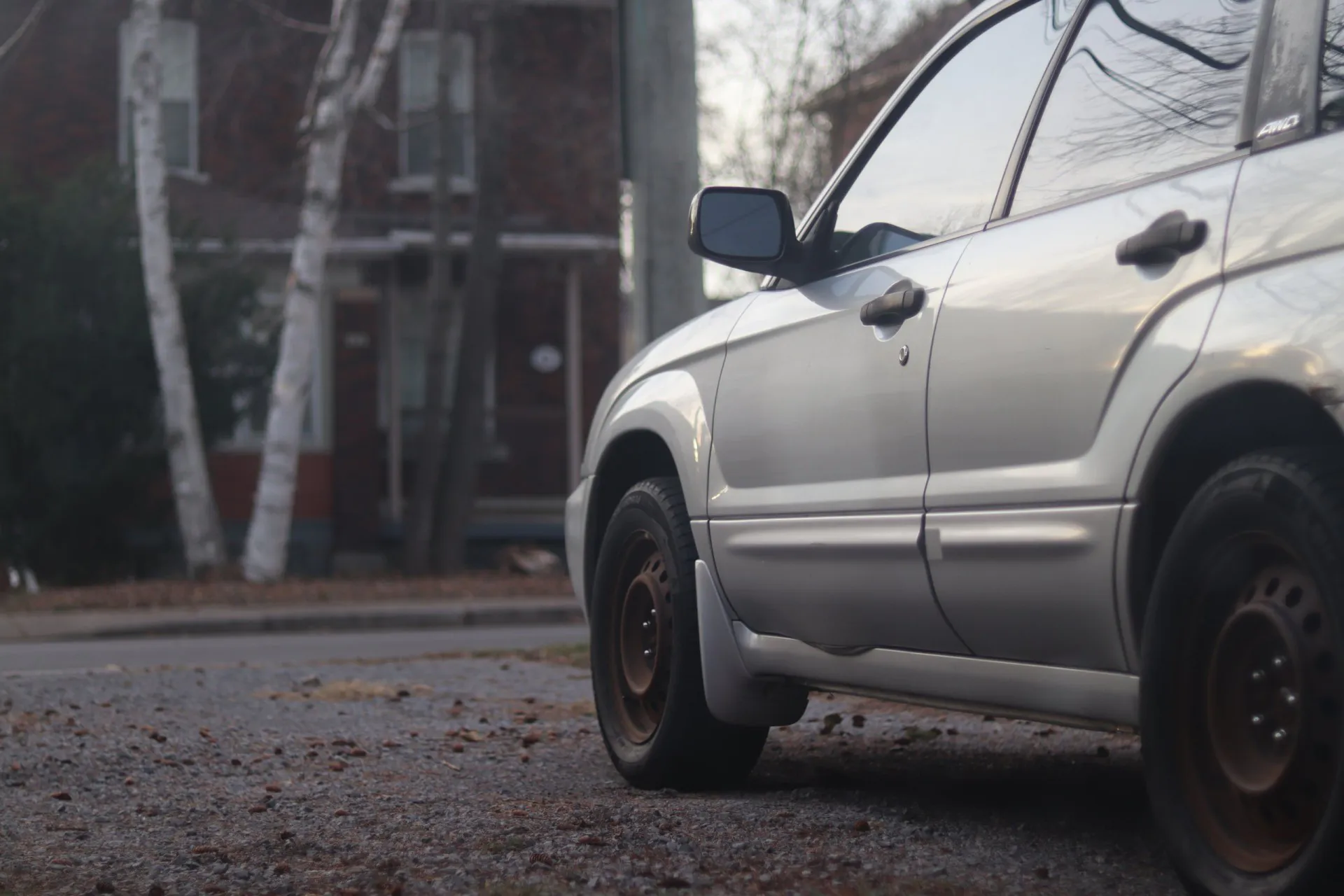
Working with the same information to determine the best Subaru Foresters, we’ve compiled the list of model years to avoid. You can expect more issues with reliability, higher maintenance bills, and in some cases lower safety ratings with these poor-performing Foresters.
2005-2006 Subaru Forester
FIXD App Engine Reliability: 1/10
Owner-Reported Reliability: 10-6/10
KBB Value: $3,641-$3,926
Fuel Economy: 21 mpg
Annual Maintenance/Repair: $625-$750
Safety Rating: 4.8/5
From the addition of electronic throttle control and a new 4-speed automatic transmission in 2005 to further powertrain updates during a 2006 mid-cycle refresh, these two model-year Foresters should be avoided.
Part of that 2006 refresh involved adding VVT (i-AVLS in Subaru-speak) to the naturally aspirated motor, revising the intake and exhaust geometry on the turbocharged mill, and updating both transmissions. As you can see on the reliability chart, it didn’t go well. The FIXD Reliability score dropped to the lowest possible score and stayed there both years.
Owner-reported reliability spiked to 10/10 in 2005 before plummeting to 6/10 in 2006. The FIXD-versus-owner variance for this year is due to how owners answered the reliability survey question.
In 2005, the majority of owners felt good about their Forester while in 2006 more gave negative feedback. But, the DTC count in both years is far above average, so these Foresters receive a thumbs down.
Adding insult to injury, 2005 owners report the highest number of days in the shop each year – six – across 20 years of data, fuel economy scrapes the bottom of the barrel at 21 mpg, and market values are flat over this period.
Correlating with the powertrain struggles, the 2005 Forester has a 50% chance of an expensive repair being engine-related, while the 2006 model has a 40% chance – both of which are far higher than the 12% average.
The most common DTCs owners can expect are P0420 for a pricey catalytic converter, P2096 for a new oxygen sensor, and P0410. That last trouble code indicates a problem with the secondary air injection system, which is an emissions issue that could require a $10 replacement fuse or a new $700 air pump.
Fortunately, there are few recalls to be aware of with one in 2005 and two for the 2006 Forester. In both cases, an issue with broken lower control arms affected about 318,000 vehicles.
2003 Subaru Forester
FIXD App Engine Reliability: 1/10
Owner-Reported Reliability: 8/10
KBB Value: $2,989
Fuel Economy: 21 mpg
Annual Maintenance/Repair: $583
Safety Rating: 4.6/5
2003 marked the first year of second-generation Forester production. As is so often the case, this factor resulted in teething problems as evidenced by the FIXD Reliability score of 1/10, the lowest possible score, and a two-point drop from the prior year.
The gap between the objective FIXD score and subjective owner score can be explained by analyzing survey responses. All owners responded with positive sentiment to the question “How reliable would you say your Forester is?”. However, the total DTC tally for 2003 Foresters is some 20% higher than average, resulting in this variance.
Other dings against the 2003 model are low fuel economy of 21 mpg and a universally disliked stereo system. That being said, these Foresters only average one day in the shop annually. The most likely big-ticket repairs deal with the brakes (28% chance) and HVAC system (20% chance).
When it comes to CELs, a faulty catalytic converter (DTC P0420) is the most common, and expensive, culprit. Other common codes include DTC P0300 for a malfunctioning oxygen sensor and DTC P0457. The latter code means there is an EVAP system leak, which can often be fixed by just tightening the gas cap.
Of the three recalls for the 2003 Forester, an issue with failing lower control arms is the most impactful as it affected over 300,000 Subarus.
2001 Subaru Forester
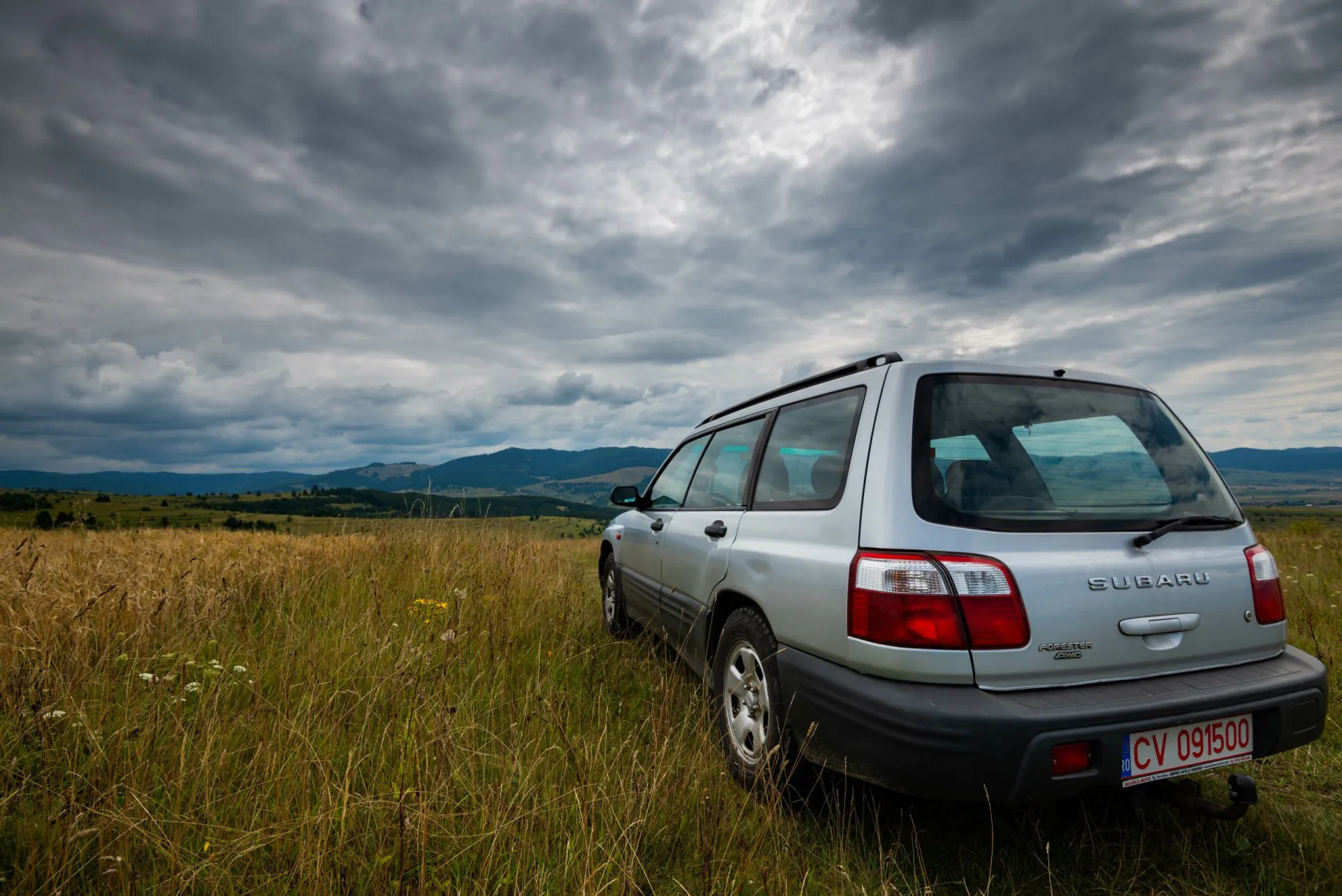
FIXD App Engine Reliability: 2/10
Owner-Reported Reliability: 7/10
KBB Value: $1,723
Fuel Economy: 21 mpg
Annual Maintenance/Repair: $250
Safety Rating: 4/5
Towards the end of first-gen production, the 2001 Forester struggled with a FIXD Reliability score of just 2/10. The owner-reported score of 7/10 was better, but still on the low side, and average fuel economy comes in at an unimpressive 21 mpg.
Bright spots include zero recalls from the NHTSA, less than one day in the shop each year, and low annual repair costs of just $250. This is all the more impressive given these 22-year-old Foresters show average odometer readings of 200,000 miles.
As with so many Forester model years, a replacement catalytic converter (DTC P0420) is the most likely culprit of a CEL. Other common offenders include DTC P0136, which likely means it’s time for a new oxygen sensor to the tune of $150-$300, and DTC P0442 for an EVAP system leak most likely caused by a loose gas cap.
2007-2008 Subaru Forester
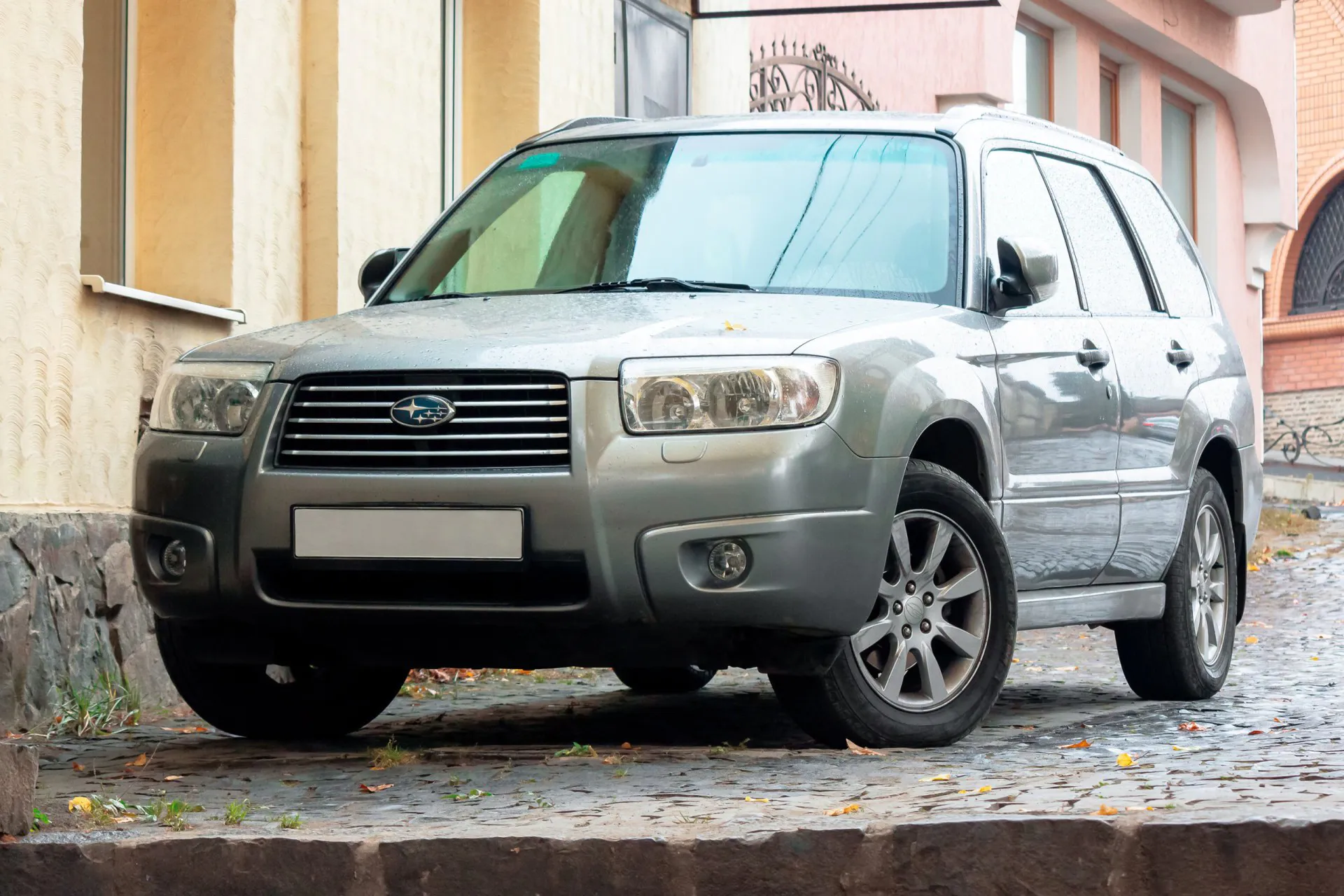
FIXD App Engine Reliability: 2-4/10
Owner-Reported Reliability: 6/10
KBB Value: $2,978-$3,491
Fuel Economy: 21 mpg
Annual Maintenance/Repair: $500-$750
Safety Rating: 4.8/5
The 2007 and 2008 Foresters suffer from long days in the shop each year (averaging three) and transmission troubles tied to revisions for the 5-speed automatic that year. 2007 is a particular low point on this subject due to the 50% chance of a $500+ repair being due to the transmission, which is 10 times higher than the average for this metric.
Though the FIXD Reliability score does improve versus 2006, it only hits 2/10 in 2007 and 4/10 in 2008, both of which are still quite low. And not only does the market value drop into 2007, but the average annual maintenance bill also increases into 2008 to $750.
That correlates with the 100% of owners who think their Forester is expensive to repair, though these model years show about 175,000 miles on the clock, so it’s not entirely surprising.
On a more enjoyable note, 25% of 2007 Forester owners say they use their car for sporty, fast driving. That is far higher than the average of 2% who feel this way and highlights the XT model, which saw output jump to 230 horsepower and 235 lb-ft of torque the prior year.
The catalytic converter, a $1,500 to $2,000 repair, represented by DTC P0420 is the most likely cause of a CEL on a 2007 and 2007 Forester as it is with so many other model years. If DTC P0303 pops up for ignition coil work, be sure to watch our P0303 ouTube video on what to expect. And for DTC P0442, try tightening the gas cap to see if that solves this EVAP system issue.
There was only one recall each year in 2007 and 2008, but they are both for the control arm issue that affected 2003-2008 Foresters. The problem has to do with the front lower control arms breaking when exposed to salty and humid environments.
2014 Subaru Forester
FIXD App Engine Reliability: 7/10
Owner-Reported Reliability: 9/10
KBB Value: $9,890
Fuel Economy: 25 mpg
Annual Maintenance/Repair: $583
Safety Rating: 4.6/5
In 2014, Subaru unveiled the fourth-gen Foresters with two new transmissions and a new turbocharged motor. As you can see on the reliability chart, it caused a notable dip in the FIXD score during an otherwise positive period of uptrending reliability.
The owner-reported reliability score this year is far more positive, but a look at the data reveals that 55% of 2014 owners felt their Forester could drive from coast-to-coast, while not a single owner checked the box for Point A to Point B driving, the most negative sentiment.
As we note at the bottom of the page, this score is subjective, so we factor it in but rely more heavily on the objective FIXD Reliability score.
There are positive notes this year like the fuel efficiency moving up from 22 mpg in 2013 to 25 for 2014. As well, market values move up and annual shop visits are slightly below average. However, based on the most common DTCs recorded by FIXD devices on 2014 Foresters, those visits can take a bite out of your wallet.
DTC P0300, which indicates the ECM has detected misfires, is the potentially least expensive repair at $1,000 to $1,500. If DTC P0420 pops for a new catalytic converter, expect a bill of up to $2,000. And watch out for DTC P0700 as this severe TCM issue can cost upwards of $3,000.
There are only two recalls for the 2014 Forester, but one of them is particularly troubling. It involves defective floor mats that curl up and interfere with the pedals. This recall impacted about 10,000 vehicles.
2018-2019 Subaru Forester
FIXD App Engine Reliability: 7/10
Owner-Reported Reliability: 9-10/10
KBB Value: $19,134-$21,557
Fuel Economy: 26-29 mpg
Annual Maintenance/Repair: $464
Safety Rating: 4.6-4.8/5
Though the 2018-2019 Forester matches the 2014 model’s FIXD Reliability score, these more recent Foresters are “better” due to higher safety scores, improved fuel economy, and lower annual repair costs.
Nonetheless, reliability took a dive during this period, which can mostly be chalked up to the all-new fifth-generation model arriving in 2019. It rode on a new platform, with a fresh powertrain, and loads of the latest technology. This brought efficiency and safety benefits, but the powertrain had kinks that would need ironing out.
One of the updates was the fully redesigned front seats for the fifth-gen Forester. This resulted in just 13% of owners responding that the seats were uncomfortable in 2019 versus 23% the prior year.
Two of the most common problem areas are shared across several of the model-year Foresters above. DTC P0420 means the catalytic converter is on the fritz and may be due for replacement. DTC P0700, a severe issue, is due to the TCM acting up. And DTC P0171 indicates a problem with the air-to-fuel ratio as we talk about on our YouTube channel.
There were three recalls for both the 2018 and 2019 Forester. The most impactful recall in 2018 was for a failing fuel pump, an issue that affected about 176,000 vehicles. In 2019, a recall was issued for rear stabilizer bar bolts detaching. This one impacted over 400,000 Subarus.
FAQs
What years of the Subaru Forester have engine and/or transmission problems?
Two of the most problematic Foresters when it comes to engine problems are 2005 and 2006. During this period, Subaru added electronic throttle control and VVT to the naturally aspirated engine, while bumping up the compression ratio and redesigning air-flow components on the turbocharged motor.
Along with sending reliability to all-time lows, these changes resulted in a 50% chance of an expensive repair being engine-related in 2005 and a 40% chance in 2006. The average for this metric over 20 years is just 12%, so avoid these particular Foresters.
As for transmission problems, the 2007 Forester stands out as having a 50% chance of a $500+ repair being related to this system. That is 10 times higher than the average 5% for this metric over 20 years and coincides with modifications to the automatic transmission in 2007.
What is considered high mileage for a Subaru Forester?
Looking over 20 years of owner-provided Forester data, we see an average odometer reading of 129,000 miles. Only two model years – 2001 and 2002 – hit 200,000 miles. The next highest mileage by model year is a 170,000 to 180,000 mile range on the 2004, and 2007-2009 Foresters.
Given that, 200,000 miles could fairly be considered a high-water mark for the Subaru Forester. If you’re looking to buy or sell a high-mileage model, be sure to check out some important details to consider on these well-used vehicles.
What other vehicles should I consider?
Though the Subaru Forester resembles a tall wagon, it technically falls into the compact crossover segment size-wise. That puts it up against vehicles like the Honda CR-V, Chevy Equinox, Jeep Cherokee, and Toyota RAV4, all of which are worth considering.
What owners of the Subaru Forester like to use their car for:
| Frequent Use Categories: | How Useful? (Out of 5 Stars) |
| Family Vehicle | ***** |
| Lots of Driving (travel/long commute) | **** |
| Hauling/Towing | * |
| Office on Wheels | * |
| Sport/Fast Driving | * |
| Luxurious Driving | * |
| Outdoor/Off-Road | * |
A Note About Data and Information Sources
This article has many details about Subaru Forester reliability; here’s what we used for our assumptions and recommendations.
- FIXD Reliability Score & Data: Engine reliability information is captured via the FIXD App.
The FIXD Reliability Score is calculated using the number of DTCs per year, weighted by mileage. This is then turned into a scale of 1-10 for easy graphing.
This is an objective score.
- Owner Reliability Score & Data: This data is the result of surveying Subaru Forester owners who use FIXD.
The Owner Reliability Score comes straight from owners of the Subaru Forester.
This is a subjective score.
To determine the Owner Reliability Score we ask each car owner:
How reliable would you say your Subaru Forester is?
a. Just point A to point B driving
b. A Daily Commuter
c. Good for a 100-mile road trip
d. Good for a 500-mile road trip
e. I could take a cross-country road trip, no problem
From here we translate their answers into the Owner Reliability Score:
a. = 2
b. = 4
c. = 6
d. = 8
e. = 10
Keep in mind, owners may think their car is more or less reliable than it actually is.
One potential problem is that people often buy the same make or model they are used to when they go car shopping, just a newer year.
Ford, for instance, has a number of consumer loyalty awards for the Ford F-Series, Ford Mustang, and Ford Expedition.
Car owners may be so loyal to the make or model they currently own that they would have trouble accurately comparing their cars’ reliability to others.
It’s for this reason that we ask car owners a question that is relative to mileage rather than relative to other cars.
Still, be mindful of the accuracy of these Owner Reliability Scores, people’s perceptions and unconscious blindspots can skew data.
We suggest looking at both the FIXD Reliability Score and the Owner Reliability Score for this reason.
- KBB Value: Average private-seller valuations as supplied by Kelley Blue Book (KBB), based on a Subaru Forester with typical mileage for that respective model year.
- Fuel Economy: Mileage-per-gallon estimates according to the EPA MPG on Fueleconomy.gov
- Annual Maintenance/Repair: Upkeep expenses as reported by surveyed Subaru Forester owners
- Safety Rating: Crash test data collected and reported by NHTSA. We average all ratings for each year to come up with a simplified, average safety score. This makes it easier to look at on a graph.
References
- Subaru Forester model-specific information. Retrieved May 22, 2023, from https://www.edmunds.com/
- Subaru Forester model-specific recall information. Retrieved May 22, 2023, from https://www.nhtsa.gov/recalls
- Subaru Forester model-specific information. Retrieved May 22, 2023, from https://www.auto-brochures.com

Niel Stender grew up doing replacement work on his old Cherokee and sweet Mitsubishi Starion, which led to a degree in mechanical engineering and a job at Ford as a vehicle dynamics engineer. His writing infuses that automotive background with sales and marketing experience. Writing about cars for close to a decade now, he enjoys digging into some of the more technical mechanical systems under the hood and throughout a vehicle.















